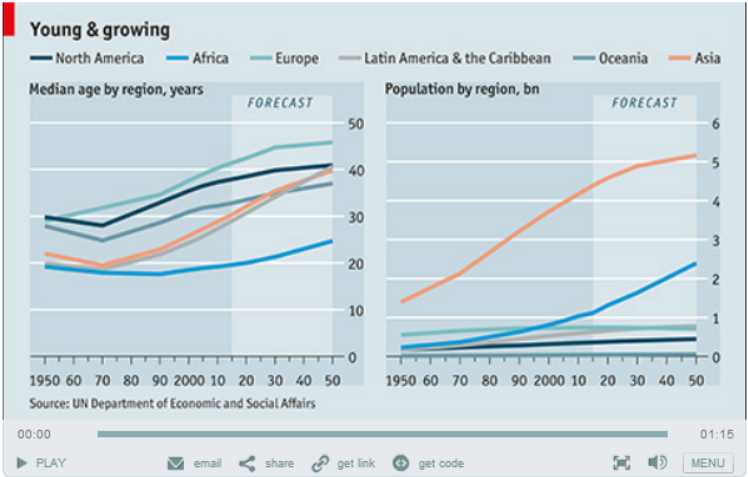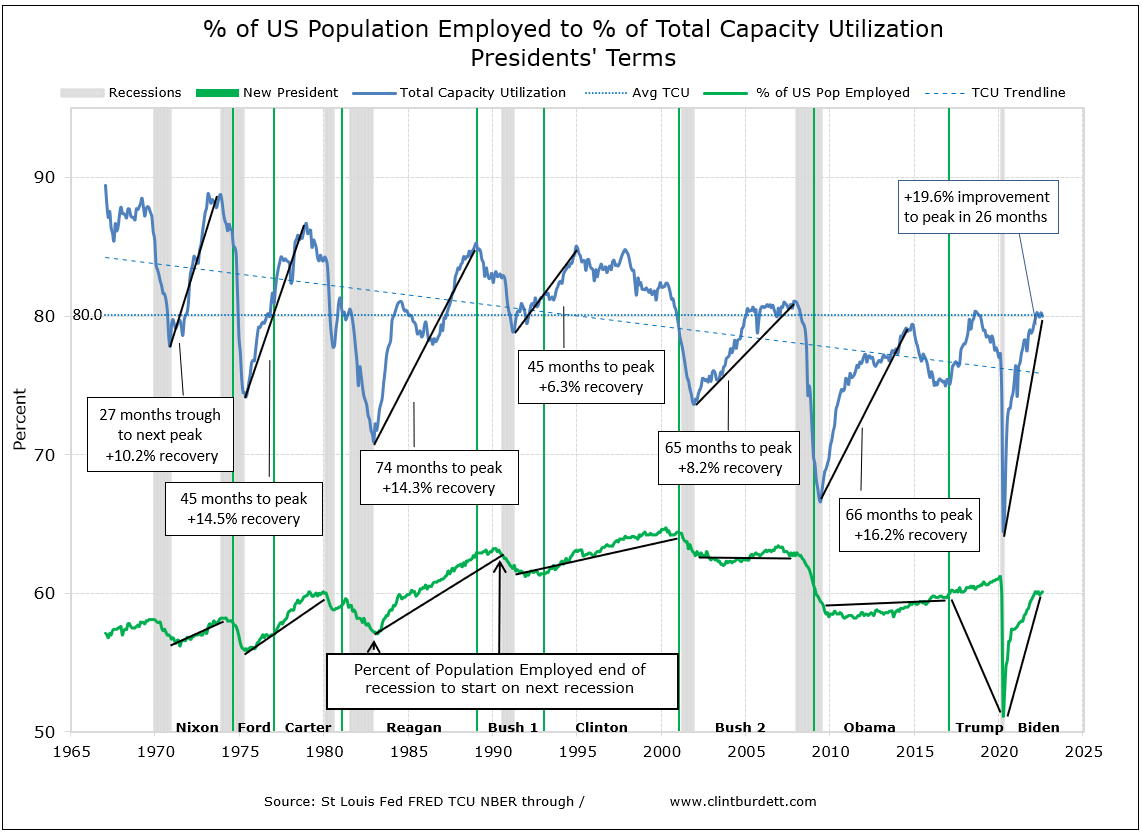|
Making
Comparisons:
How
Far to Drill Down
Quantitative data
Relative data
Presenting
Data
Models:
Macro Trends
Porter's Competive Forces
Complementors
Value Chain
Value Proposition:
Customer-Product Match
The Buying Decision
Importance-Performance
Matrix
I/P Matrix Variations
Your Employees
Financials:
Corporate
Business Unit
Department
Who Does The Research |
Macro Trends
I learned early on that strategists extrapolate their knowledge
to predict future events, even though folks always disclaim "no
one can predict the future." So planning teams conduct environmental
analyses, external analyses, trend analyses, etc.
Here I call it macro (outside your firm and it's
immediate market) trend (likely behaviors) analysis.
As a Strategic Planning Consultant with over 25 years of experience,
I have developed a sense of what are reasonable assumptions to
make about future events, since 2008, I have commented
on economic trends in my blog to help me hone my analyses and since 2014 summarize trends in the US business cycle.
The process chapters on this
website help you organize your thinking to formulate strategy.
A macro trend has a long life, a result of many forces in your
community that you cannot manipulate. Like a river, you go with
the current or exhaust yourself fighting it.
Usually, as a strategic
planning team formulates a strategy, we start with and lump trends
into areas of analysis in our external environment - our market
and our community. We are assessing opportunities and threats
for a
SWOT.
|
|
Typical Groups for Macro Trends
- Demographics - population groups, life spans, family composition,
disposable incomes
- Economics - capital, business processes, productivity, work
patterns, management
- Environment - raw resources, ecosystems, transportation channels,
habitat
- Government - world events, politics, laws, public and economic
policy, regulation
- Society - lifestyles, values, religion, leisure, culture, education,
public-health
- Technology - innovations, scientific discoveries, economies
of scale, production and project management tools
A trend may fall under several of areas, but as a strategic planning
facilitator, I resist the temptation to put it under two or more,
since you can overstate importance.
Most strategists feel that four areas need to be studied in detail:
politics, economics, society (demographics) and technology, which
is often called a PEST
assessment, particularly in Europe. Add environmental and legal
trends to get a PESTEL (or PESTLE) assessment. Others call the same assessment method the Five Forces.
A "driver" is a trend in the community, as it builds
momentum, that will trigger an opportunity for your business. For
example, in the 1970s Royal Dutch Shell saw the need for more refineries
as an opportunity with the driver being the 1973 Oil Shock. A current
driver for web meetings is increasing travel costs, which will
increase demand for Webex or Citrix GotoMeeting.
Demographics - we can accurately estimate demographic
trends well into the future.
Here is a 50 year perspective on population median age by region by The Economist Daily Chart team which explains the interest in Affica and it is so well presented. See this superb presentation here.

Economics - the business cycle our focus - is
data rich but prone to short term misinterpretation.
This chart shows that peak capacity of US Industries has been
in decline, a long term view. Since the late 1980s, just in time
delivery has "driven" consolidation in the supply chain,
a driver in plant construction and hiring decisions. Demographics
also explain the decline with the Baby Boom generation entering
retirement, there
will be a lower participation rate (Participation Rate = Labor
force / Civilian noninstitutional population).
Politics evolve along the election cycle as "new" majorities
change the rules. Add Presidential elections to the chart above
shows that the business cycle is independent of the election cycle
over the long term. The gray shaded vertical bars are the US recessions,
the start of a recession marks the end of the upturn in the business
cycle. Peak US Capacity Utilization marks the high point of a business
cycle.
 Click to see larger image
Click to see larger imageUSA peak capacity
is trending down. Job creation, the percent of the US population
employed (the red line at the bottom of the chart) has peaked and
is also trending down. The slope of the black lines represents
the pace of job creation/month from the end of a recession to the
beginning of the next. The green vertical lines mark inaugurations
of new Presidents (Nixon, Ford, Carter, Reagan, Bush1, Clinton,
Bush2, Obama). The business cycle is independent of the election
cycle: for example, Ford's quiet craftsmanship led to Carter's
burst of job growth; Volker as Chairman of the Federal Reserve
Board killed inflation and Reagan took off; Bush1 built the foundation
for a recovery (and so doing, cost him the election) and then Clinton
bragged; Bush2's tax cuts did not accelerate job creation over
eight years. Presidents react. Individual business choices, structural
changes in competitiveness - the business cycle - create or shed
jobs.
Technology trends are identified from industry
associations as the best firms innovate and create the standards
so their products will have an advantage in the market.
 The question is do you move early
or wait? If you wait, do you hedge your bets? Is the trend
an opportunity to take advantage of, or a threat that will make
doing business very difficult? The question is do you move early
or wait? If you wait, do you hedge your bets? Is the trend
an opportunity to take advantage of, or a threat that will make
doing business very difficult?
Next, how do you assess and track these trends.
|